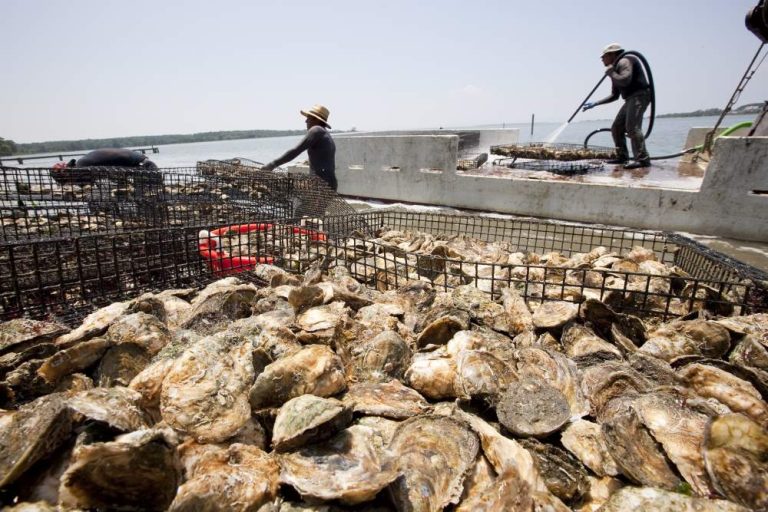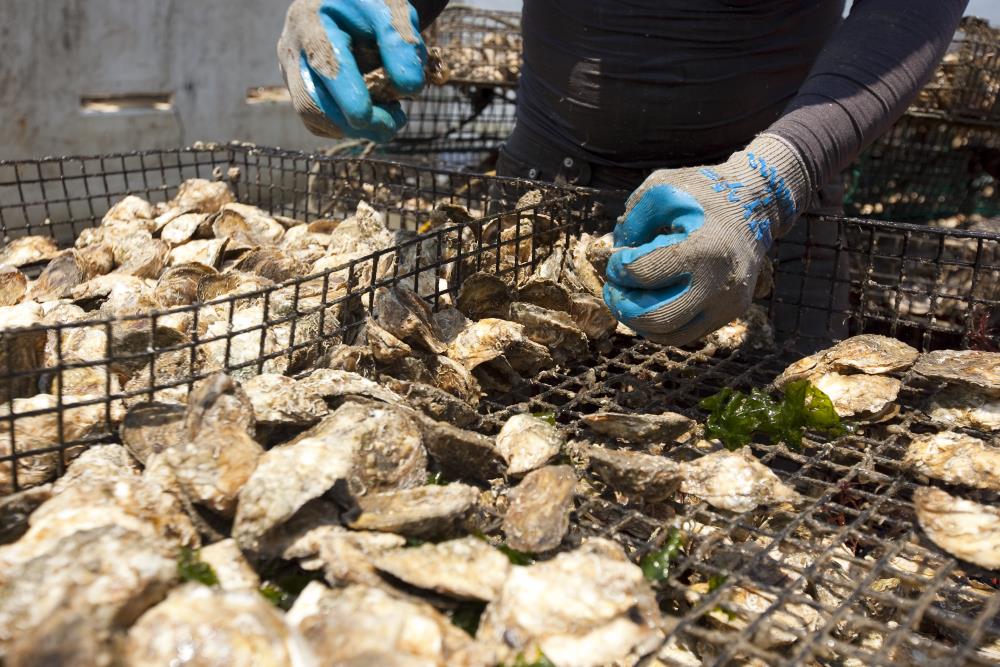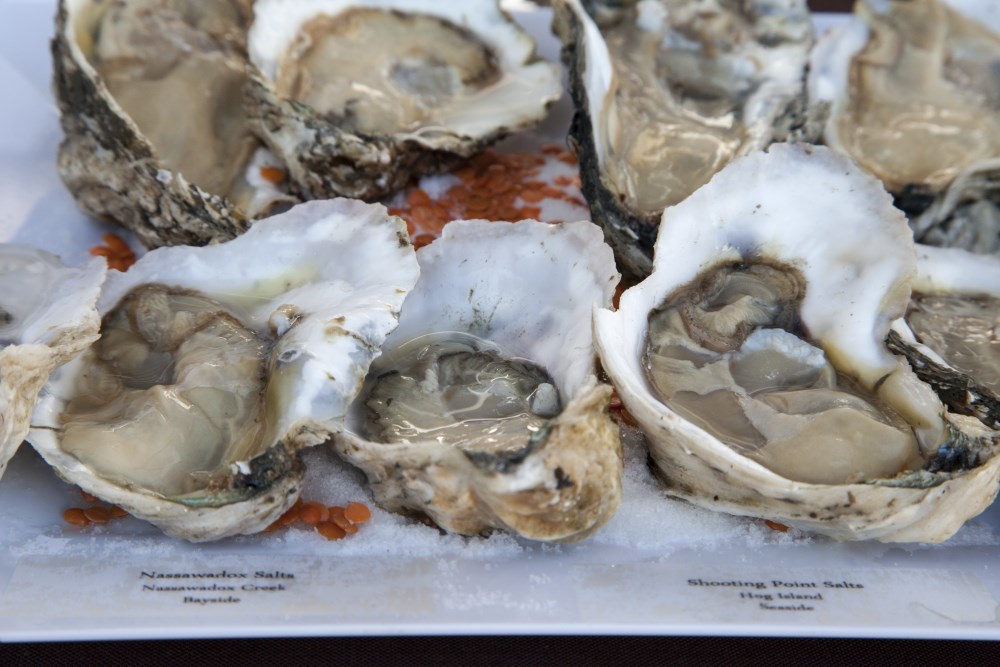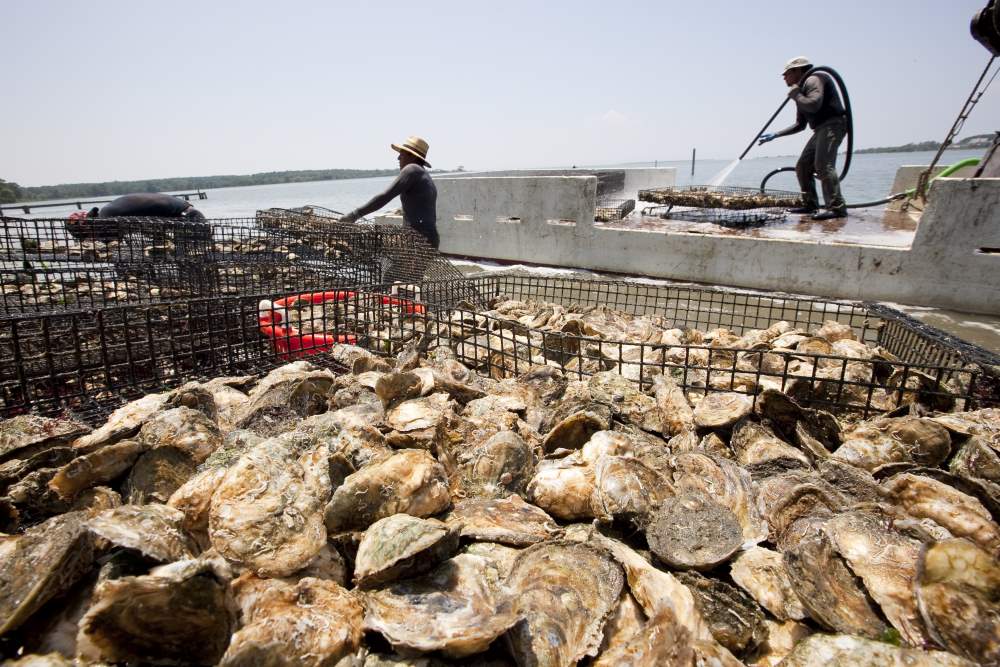The Virginia Oyster Trail Is for Lovers
In the past decade, Virginia oysters have made an amazing (and delicious) comeback — here's where to go to get a taste.

If Virginia is for lovers, it’s no surprise the state harvests some exceptional oysters. The shellfish is said to be an aphrodisiac, after all.
In fact, Virginia is so proud of its oysters, the state spotlights them on the Virginia Oyster Trail, which connects purveyors with restaurants and raw bars, and beckons oyster lovers to stop, slurp and stay a while.
8 Things You Must Do in Virginia (Besides Eating Oysters)
To get to this delectable region, head to the Eastern Shores, about an hour outside of Norfolk. Once there, you can sample oysters — whether you like them on a half shell, fried or in stews — from the shore’s eight distinctive oyster regions.

Photo Credit: Virginia Tourism Corporation (Virginia.org)
The Chesapeake Bay on the western coast and the Atlantic Ocean on the eastern coast give the geographic blessing that makes this area deserving of its own oyster circuit. “This provides the ideal variety for oyster lovers,” says Caroline Logan, director of communications for Virginia Tourism Corporation. “They can enjoy briny, salty oysters from the seaside purveyors and creamy, sweeter oysters from the bayside.”
Discover America’s Most Underrated Wine Regions
As an example, the region’s Sewansecott oysters are grown on the seaside, close to the Atlantic Ocean in an area renowned for its pristine water quality, says Heather Lusk, Vice President at H.M. Terry Co., a sustainable seafood purveyor which grows its own clams and oysters. The environment contributes to the oyster’s crisp, briny flavor, with a punch of salt and perfect sweet finish, Lusk explains.
“Nothing tastes more like its place than an oyster,” Lusk says.
So, how exactly did Virginia become an oyster destination?
The state’s love affair with oysters dates all the way back to when Native Americans referred to the Chesapeake Bay as the “great shellfish bay.”
The conditions of the Chesapeake Bay were ideal for oysters. Salty Atlantic waters mixed with the freshwater from the rivers that emptied into the Chesapeake Bay. And, in turn, oysters helped their habitat flourish by filtering water and providing a marine habitat for tiny bay organisms.

Photo Credit: Virginia Tourism Corporation (Virginia.org)
Population growth and pollution in the 19th and 20th centuries compounded by unsustainable fishing practices and parasitic diseases harmed oyster beds, and the oysters became scarce in the areas they once flourished. By the 1980s, it was tough to find plump oysters in the bay.
Then, an oyster renaissance of sorts began.
In the early 2000s, scientists, oyster harvesters, environmental agencies and federal officials collaborated and discussed plans to save the Virginia oyster industry. Cleaning up the Chesapeake Bay and reintroducing healthy oysters were chief among their efforts.
Check Out Our List of Virginia’s Best Beaches
The Virginia Institute of Marine Science is also credited for championing triploid oysters from the common Crassostrea virginica that was native to their waters. In a nutshell, these oysters have three chromosomes rather than two, making them sterile so they can grow much faster and fend off disease better than diploid oysters. (Rest assured, these aren’t at the center of a GMO debate as the oysters aren’t altered by inserting genes from another species or source. You can think of them as the “seedless watermelon” of the water).

Photo Credit: Virginia Tourism Corporation (Virginia.org)
By 2015, a series of environmental laws, state programs and sustainable aquaculture companies combined to help revive the oyster region, Logan explains. Virginia oysters from sustainable oyster companies were being shucked and served at fine restaurants throughout the country.
“The resurgence of the oyster industry in Virginia spurred a renewed interest in our tiniest delicacies,” she says. This led the state’s tourism office to begin marketing the Virginia Oyster Trail, and here we are. Check out our guide to the different oysters featured on the trail below, but keep in mind even our best descriptions don’t hold a candle to a taste of the real thing.
The Oyster Regions Along the Eastern Shores
In all, the Eastern Shores has eight oyster regions, which can be enjoyed with a beer at hole-in-the wall oyster bars or paired with wine at charming vineyards and upscale restaurants.
Here are all of the regions you’ll want to tick of your oyster map:
Seaside: These oysters from the Atlantic coast of the Eastern shore start off salty, but move to a sweet buttery finish.
Upper Bay Eastern Shore: These savory bay oysters are harvested from the bay coast of the Northern part of the Eastern Shore.
Lower Bay Eastern Shore: In one slurp, you’ll get a flavor trio: salty, creamy and a tad sweet, and they sync up perfectly with a chardonnay. These oysters come from the bay side of the Eastern Shore, between Craddockville and Cape Charles.
Upper Bay Western Shore: These sweetwater oysters from the mouth of the Potomac River to North of the Rappahannock River have a light, creamy finish.
Middle Bay Western Shore: A tad salty, oysters source from the mouth of Rappahannock River are buttery with a slightly mineral taste.
Lower Bay Western Shore: You’ll taste a mild saltiness on the tongue moving to a sweet finish when you sample these oysters that come from the Mobjack Bay region and the mouth of the York River.
Tidewater: These salty oysters are harvested south of Yorktown to Virginia Beach along the shore.
Tangier/Middle Bay: A balance of both salty and sweet, rounded out with a buttery finish, these oysters come from Tangier Island and the North Central part of the Chesapeake Bay.
